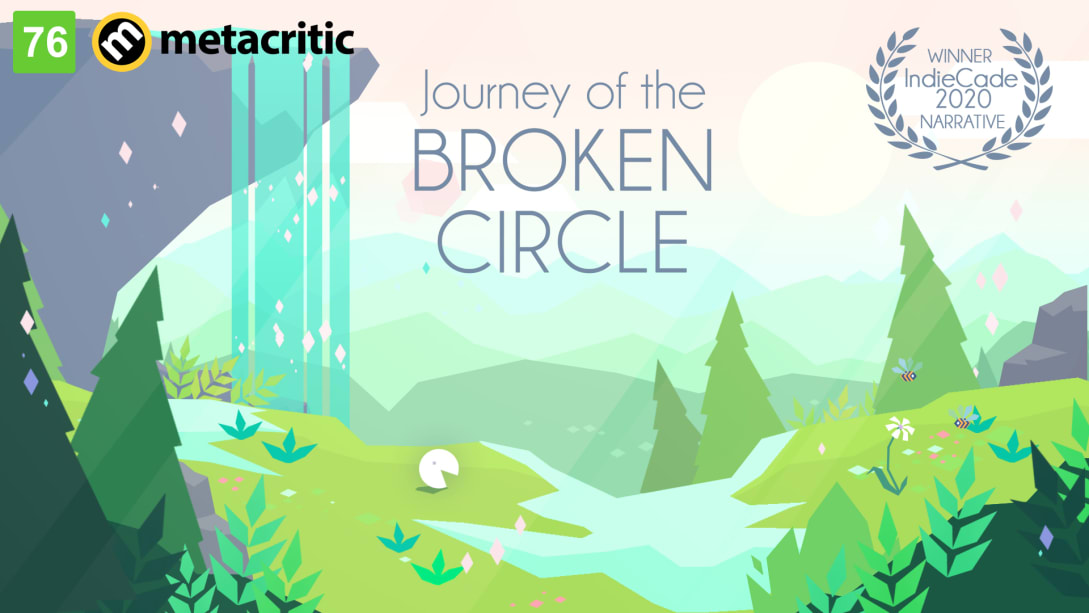
A simple, straightforward set up: you’re a circle going left to right on the screen like any platformer. But you’re a broken circle. A small wedge is missing, giving you an almost Pac Man look. But unlike Pac Man, you roll, and with a missing wedge, you don’t roll so well. Suddenly, going left to right and negotiating the landscape is not so easy.
And Circle, let’s call him that—your character—feels this. And I mean, Circle really feels this. The difficulty of going left to right, progressing through the game, is translated to a lesson in life: progressing in life is a challenge when you’re missing part of what makes you whole. Circle has a lot of emotions.
You meet various friends who fit into this little missing wedge while bringing along unique abilities: a balloon that can fly, a sticky bump, a spikey layer, and a slick/quick wedge, all of which help you zoom through the stage. Once you get the basics of the new ability, the game pushes to you to master them.
It’s here in this transition from friend to friend, ability to ability, that Journey of the Broken Circle unwraps its story and dialogue. After each successive relationship, Circle runs through the human emotions of loss, grief, stubbornness, the desire for control, and the sense of emptiness when we can’t have it. As Circle’s skill grows, despite his loss of new friends, he grows more mature, relating his latest loss to his newfound maturity.
In this way, Journey of the Broken Circle explores the mysteries of human emotions and wisdom, through the relatable occasions of finding new attachments and losing them. As a 34-year-old and father of 5, the lessons weren’t as valuable as they might have been at 16 when my first significant other broke up with me, or at 21, when I realized I had nothing in common with my best friends from high school.
The game has a moment or two where it tries to be smarter than it is. The trailer says it’s a “game about falling in love” but it doesn’t take much effort to detect the heavy push for existentialism as the center of focus. For those interested, existentialism is a school of philosophical thought that focusses on existence like a problem, through the inquiry of experience, activity, and free thinking. Meaning and purpose in life—somewhat the circle’s chief dilemma—to an existentialist, is somewhat transient and fluid, such that complete freedom of the will and the exploration of experiences and choices will inevitably provide this meaning and purpose. To put it in as few words as possible: an existentialist believes that he is the sum of his experiences.
Take from that what you will. Experiences are good. Choices and free will, fundamental to the human person and human nature. But they are not the essence of man, and man cannot find happiness in himself. Much like Circle finds, he needs help—from something other than himself and more eternal than his ephemeral relationships. Unfortunately, I didn’t find that the creators of this game appreciate that. That element of the game became a turn off. Turning this otherwise fun and colorful 2-3 hour experience into a sloppily written crash course in bad philosophy.
“My help comes from the Lord, who made heaven and earth” (Psalm 121). If only Circle was in my first grade CCD class. He’d roll a lot better through life, missing wedge and all.
Scoring: 60%
Gameplay: 4/5
Story: 3/5
Replayability: 2/5
Morality/Parental Warnings:
Although not all bad, the story teaches some poor philosophy (existentialism).
